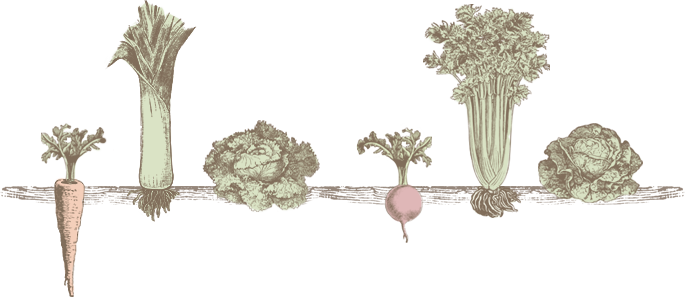
The Dirt on Dirt: 2 Simple Tips For Good Soil Health
Published Thursday, Oct 30, 2014
When soil gets the care and attention it needs, it becomes something marvelous.
Through research, I discovered tons of information, including a list from Mother Earth News which is very comprehensive: “Eight Steps for How to Make Better Garden Soil,” by Harvey Ussery. The article covers landmark steps for creating productive soil while also giving in-depth methodology. I drew from that piece to prepare a simpler version highlighting 2 tips to grow your urban garden’s soil health. Let us know how you put them into action in your own garden!
Plant Cover Crops
Planting and growing cover crops will benefit your soil for many seasons to come. It is a valuable method for building up soil health and improving its oxygenation through the labyrinth of corridors constructed by the cover crop’s root system. Legumes like alfalfa, beans, and peas make great cover crops. They fix nitrogen from the atmosphere into forms consumable by the plants.
Prioritizing cover crops equally with planting food crops will improve soil health tremendously. Alternate your beds, no matter how small, by planting food crops in one bed and a cover crop in another bed one season, and then switching the next season. You will be able to quickly observe the positive results. Seeing rich, healthy soil gives the gardener a proud sense of satisfaction which eclipses in the heartiness of the coming crop.
Compost
Composting is a process of recycling organic wastes to create decomposed super-food for your soil. There are many important processes going on in a compost pile and equally as many reasons for how it helps your garden. It speeds up formation of soil humus which is essential for keeping your garden healthy because it feeds the population of microorganisms in your soil and maintains high levels of soil life. Humus is also a good source of microbes for the soil. Plus, it only takes about a quarter-inch of compost per season to increase your soil’s water retention and help prevent sickness. (Not to mention all of the food scraps and paper that is diverted from the landfill and into the health of the soil.)
How to start a compost pile
To begin a compost pile, you alternate high-nitrogen wastes such as manures, crop residues, and kitchen wastes, with materials that are less decomposable, like straw, newspaper, and corncobs.The pile needs to stay moist – like a wrung out sponge. The organic matter breaks down over time (which occurs without any effort) and creates heat.That’s it! In no time, a nice and productive pile of compost will be ready for you to elevate your garden to the next level.
Growing vegetables removes nutrients from the soil and composting is a simple way to build fertility up again. (For more detailed information about composting, check this out). However you choose to recycle nutrients back into the ground, you can be sure that your garden will appreciate it.
Upon first learning about soil, I was enthralled by how lively earth really is and I hope this brief introduction will inspire you to see how little actions can enliven the ground beneath your feet. Some of the most effective solutions to soil health are close at hand and require little effort. Making your soil a top priority will help you cultivate a healthy relationship with the Earth and it will show in the new vibrancy of your garden! What are you waiting for?






